The Great Place for all lake forest health and fitness | island health and fitness | health and fitness blogs Health and Fitness Blog Information and News.
Monday 29 February 2016
Zika virus likely to cause paralysing Guillain-Barré syndrome
Zika 'might cause' paralysis syndrome
How Eating Fries Might Help You Slim Down
Is it OK to have some fries if you're trying to lose weight or eat cleaner? Turns out, your favorite indulgences are no longer off limits, even when you're trying to slim down or eat healthier. Adding a small portion of a splurge food to an otherwise healthy plate tricks your brain into thinking your healthy dish is just as decadent as a junky smorgasbord, revealed a recent study from the journal Management Science.
How Do We Learn Languages?
The use of sound is one of the most common methods of communication both in the animal kingdom and between humans. Animals use vocalization and calls to communicate and share critical information about food, dangers and individual intentions. Vocalization in the animal kingdom, as far as we know, relies on relatively small vocabulary of sounds, and a newborn animal is ready to communicate with adult individuals almost immediately. In contrast, human speech is a very complex process and therefore needs intensive postnatal learning to be used effectively.
Furthermore, to be effective the learning phase should happen very early in life and it assumes a normally functioning hearing and brain systems. In fact, the integrity of the hearing system seems to be very important to the language learning process. Children who lose hearing capacity will suffer a decline in spoken language because they cannot hear themselves and lose an important auditory feedback.
Nowadays, scientists and doctors are discovering the important brain zones involved in the processing of language information. Those zones are reassembled in a number of a language networks including the Broca, the Wernicke, the middle temporal, the inferior parietal and the angular gyrus. The variety of such brain zones clearly shows that the language processing is a very complex task.
On the functional level, decoding a language begins in the ear where the incoming sounds are summed in the auditory nerve as an electrical signal and delivered to the auditory cortex where neurons extract auditory objects from that signal.
After hearing and analyzing sounds by the cortex, the temporo-frontal networks located in the left hemisphere will proceed to syntactic and semantic identification in order to classify words and find their corresponding themes. The next step is a sentence level analysis supported by the right hemisphere temporo-frontal networks.
The effectiveness of this process is so great that human brain is able to accurately identify words and whole phrases from a noisy background. This power of analysis brings to minds the great similarity between the brain and powerful supercomputers.
Why is it harder to pick-up a new language in adulthood? Neuroplasticity you said?
Until the last decade few studies compared the language acquisition in adults and children. Thanks to modern imaging and electroencephalography we are now able to address this question.
Recent findings showed that infants begin their lives with a very flexible brain that allows them to acquire virtually any language they are exposed to. Moreover, they can learn a language words almost equally by listening or by visual coding. This brain plasticity is the motor drive of the children capability of “cracking the speech code” of a language. With time, this ability is dramatically decreased and adults find it harder to acquire a new language.
The maturation of the infant brain is accompanied by myelination in different regions to achieve higher speed of neuronal communications. While this boosts the data transfer rates, it is believed that it also constraints cognitive functions and decreases the plasticity of the brain. As a consequence, with time it becomes increasingly harder for a growing young adult to learn new languages.
Scientists also believe that until the age of seven to eight years children can learn and speak a second language fluently and without any accent. However, after that age, the learning performances will gradually decline and accent is more and more obvious in a person speech.
Why some people are faster language learners than others?
It has been clearly demonstrated that there are anatomical brain differences between fast and slow learners of foreign languages. By analyzing a group of people having a homogenous language background, scientists found that differences in specific brain regions can predict the capacity of a person to learn a second language. For example, studies concluded that morphology and size of the auditory cortex can predict our phonetic learning capacity while the connections between auditory cortex and specific parietal regions can inform us about the speech sound capability.
Whilst it is not yet clear if the morphological or connective variations in children will affect their capacity to learn a foreign language in adulthood, some scientists strongly believes that such anatomical variations can seriously influence our learning curve.
Native and second language brain zones: how do they work and where are they located?
Functional imaging of the brain revealed that activated brain parts are different between native and non-native speakers. The superior temporal gyrus is an important brain region involved in language learning. For a native speaker this part is responsible for automated processing of lexical retrieval and the build of phrase structure. In native speakers this zone is much more activated than in non-native ones.
The brain of a second language learner is forced to use more resources to decode a foreign or a second language speech. In this situation, the inferior frontal gyrus is activated to cope with the new language and try to identify the meaning of words and sentences.
Language acquisition is a long-term process by which information are stored in the brain unconsciously making them appropriate to oral and written usage. In contrast, language learning is a conscious process of knowledge acquisition that needs supervision and control by the person.
A native user of a language barely uses conscious processes to communicate making the expression of ideas fluent and coherent. On the other hand, to produce a phrase in a foreign language, firstly the unconscious process is triggered and then the conscious mechanisms are used to correct and adapt the sentence. It is clear that the conscious processing of a language materials is effort- and time-consuming and needs to be triggered by the person. As a result, it is much harder for a non-native speaker to reach a level of fluency equal to a native language speaker.
Despite the fact that brain structure can modify the way we learn new materials, it is necessary to understand that during the phase of language acquisition social interactions are crucial to the process. This hypothesis is confirmed by scientific data that showed a strong relationship between an infant social behavior and his or her capacity to gain new language concepts and vocabulary. Autism is an example of condition where a child who is lacking the necessary social interactions for encoding language materials will struggle to make communication fluent and correct.
References
Casey BJ, Giedd JN, & Thomas KM (2000). Structural and functional brain development and its relation to cognitive development. Biological psychology, 54 (1-3), 241-57 PMID: 11035225
Dehaene-Lambertz G, Dehaene S, & Hertz-Pannier L (2002). Functional neuroimaging of speech perception in infants. Science (New York, N.Y.), 298 (5600), 2013-5 PMID: 12471265
Friederici AD (2002). Towards a neural basis of auditory sentence processing. Trends in cognitive sciences, 6 (2), 78-84 PMID: 15866191
Golestani N, Molko N, Dehaene S, LeBihan D, & Pallier C (2007). Brain structure predicts the learning of foreign speech sounds. Cerebral cortex (New York, N.Y. : 1991), 17 (3), 575-82 PMID: 16603709
Kuhl PK, Tsao FM, & Liu HM (2003). Foreign-language experience in infancy: effects of short-term exposure and social interaction on phonetic learning. Proceedings of the National Academy of Sciences of the United States of America, 100 (15), 9096-101 PMID: 12861072
Newport, E. (1990). Maturational Constraints on Language Learning Cognitive Science, 14 (1), 11-28 DOI: 10.1207/s15516709cog1401_2
Paus T (2005). Mapping brain maturation and cognitive development during adolescence. Trends in cognitive sciences, 9 (2), 60-8 PMID: 15668098
Petitto LA, & Marentette PF (1991). Babbling in the manual mode: evidence for the ontogeny of language. Science (New York, N.Y.), 251 (5000), 1493-6 PMID: 2006424
Rodriguez-Fornells, A., Cunillera, T., Mestres-Misse, A., & de Diego-Balaguer, R. (2009). Neurophysiological mechanisms involved in language learning in adults Philosophical Transactions of the Royal Society B: Biological Sciences, 364 (1536), 3711-3735 DOI: 10.1098/rstb.2009.0130
Rüschemeyer SA, Fiebach CJ, Kempe V, & Friederici AD (2005). Processing lexical semantic and syntactic information in first and second language: fMRI evidence from German and Russian. Human brain mapping, 25 (2), 266-86 PMID: 15849713
Image via Luis Molinero / Shutterstock.
via Brain Blogger Read More Here..Zika Found in 9 U.S. Pregnancies, Outcomes Often Severe: CDC
Source: HealthDay
Related MedlinePlus Pages: Health Problems in Pregnancy, Zika Virus via MedlinePlus Health News Read More Here..
Cyberbullying, Violence Linked to PTSD in Teens
Researcher says post-traumatic stress is underreported and undertreated in this age group

Source: HealthDay
Related MedlinePlus Pages: Bullying, Post-Traumatic Stress Disorder, Teen Mental Health via MedlinePlus Health News Read More Here..
Graphic Cigarette Warnings May Target Brain's 'Quit Centers'
Areas linked to emotions, decision-making and memory are triggered, researchers suggest

Source: HealthDay
Related MedlinePlus Pages: Quitting Smoking, Smoking via MedlinePlus Health News Read More Here..
More Americans Opting for Butt Implants, Lifts
New data on plastic surgery trends also finds men increasingly undergoing breast reductions

Source: HealthDay
Related MedlinePlus Page: Plastic and Cosmetic Surgery via MedlinePlus Health News Read More Here..
Surgeons Perform First U.S. Uterus Transplant
'Life-enhancing' procedure offers womb-less women a chance at pregnancy
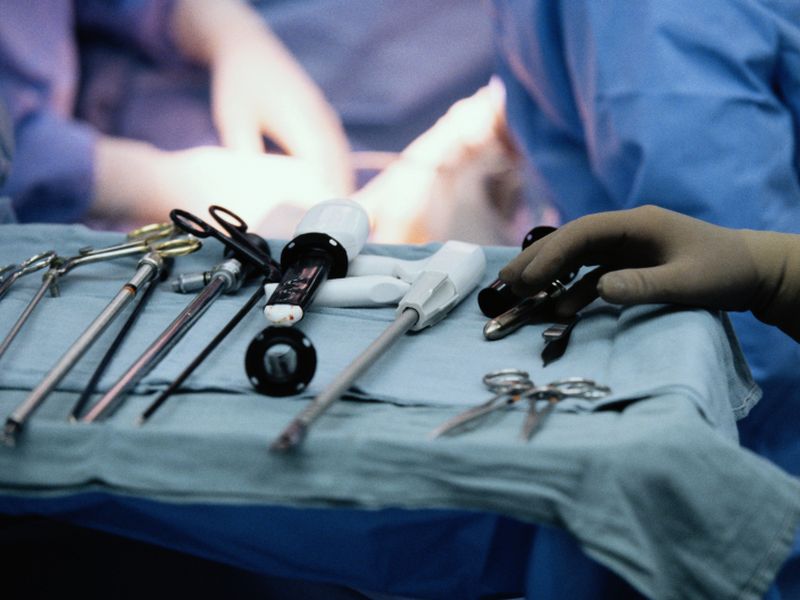
Source: HealthDay
Related MedlinePlus Pages: Female Infertility, Organ Transplantation, Uterine Diseases via MedlinePlus Health News Read More Here..
Urinary Incontinence Risk Rises Slightly After Vaginal Birth, Study Finds
But the risks that come with an elective C-section must be considered as well, experts say

Source: HealthDay
Related MedlinePlus Pages: Childbirth, Urinary Incontinence via MedlinePlus Health News Read More Here..
For Transgender Kids, Support Is Key to Emotional Well-Being
Study did not find higher depression levels when parents backed children's choice

Source: HealthDay
Related MedlinePlus Pages: Child Mental Health, Gay, Lesbian, Bisexual and Transgender Health via MedlinePlus Health News Read More Here..
Many Parents Downplay Value of Flu Shot, Poll Finds
Confusion about effectiveness, safety tied to low rates of immunization among U.S. kids
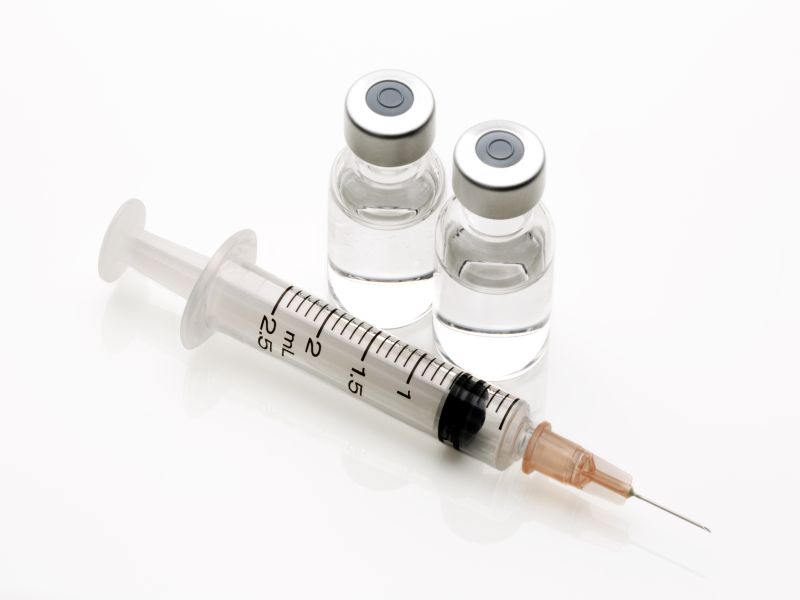
Source: HealthDay
Related MedlinePlus Pages: Childhood Immunization, Flu Shot via MedlinePlus Health News Read More Here..
Paid Family Leave Tied to Decline in Child Abuse
California study found hospital admissions for abuse-linked head injuries dropped after policy enacted

Source: HealthDay
Related MedlinePlus Pages: Child Abuse, Family Issues, Infant and Newborn Care via MedlinePlus Health News Read More Here..
Pot Habit Early in Life May Alter Brain, Study Suggests
Regular marijuana users who started smoking before 16 had marked differences on MRI scans

Source: HealthDay
Related MedlinePlus Pages: Marijuana, Teen Health via MedlinePlus Health News Read More Here..
Latest ratings mean 118 GP practices are ‘outstanding’
| More than 3,000 practice inspections give positive picture Related items from OnMedica Treatment of whistleblowers a “stain on NHS”, say MPs Best GP practices put on show Quarter rise in diabetes claims against doctors BMA and College demand halt in CQC inspections Rural healthcare 'failing' elderly |
Rare cancer cases need several GP appointments before referral
| Three or more visits needed before referral, survey shows Related items from OnMedica Diagnosing cancer early Proportion of cancers diagnosed through two-week urgent GP referral increases Postcode lottery in early cancer diagnosis revealed Differentiating cancers £400m cancer revamp calls for speedy GP referral |
Report claims plain packaging has cut smoking rates
Cancer app set to help GPs improve care
| Free app should help speed up cancer referrals Related items from OnMedica Smartphones help people track what they eat Mobile app for GPs to help with CPD Yellow Card scheme goes mobile with first app NHS should remove unproven apps from library Technological revolution of connected care |
GP leaders condemn obesity strategy delay
| Childhood obesity strategy delayed until summer Related items from OnMedica New legal duty on doctors to report FGM in under 18s Large child health variations across country Will a sugar tax reduce obesity in the UK? Tackling obesity ‘must be made a national priority’ NHS Health Check waste of time and money, says study |
Aids rumour empties Sri Lankan school
Rise in wellbeing found in late 60s
Diabetes robot to help children
App to help doctors spot cancer signs
New NHS cancer drugs fund approved
Ebola nurse discharged from hospital
The art that shows what goes on deep in the human brain
The children living with rare diseases
Sunday 28 February 2016
The crying game: How tears can work for you
VIDEO: Baby necklace keeps medical records safe
Necklace aids child vaccination
Saturday 27 February 2016
Tumor is the most important book I’ve ever written
Contact Lens Solutions With Hydrogen Peroxide: To Avoid Injury, Follow All Instructions
Related MedlinePlus Page: Eye Wear via MedlinePlus Health News Read More Here..
Friday 26 February 2016
Picking Apart Schizophrenia
In A Beautiful Mind , John Nash, played by Russell Crowe, is immersed in a fantasy world of conspiracy and paranoia. All of this we later learn is a product of his mind and a symptom of his untreated schizophrenia.
This story is a powerful example of what’s known as the ‘positive’ symptoms of schizophrenia, meaning that they are in addition to our normal everyday experience. This is contrasted by ‘negative’ symptoms, such as social withdrawal and depression. The observation of these seemingly opposing groups of symptoms form the basis of an argument that schizophrenia, rather than being a single disease, is in fact a collection of different disorders each with their own specific set of symptoms.
What some patients consider the most debilitating group of symptoms though, are not the hallucinations or social anxiety, but are actually a third group, which affects cognition (or the mental processes of memory, perception or judgment).
Cognitive problems include issues with working memory or how well you can hold information in your mind for short periods, and something called “cognitive flexibility”.
As an example of everyday cognitive flexibility, think about how you may park your car in the same spot every day. One day though your usual space is taken and your car has to be parked on the next block. Your memory is normally flexible enough to suppress your old memories (of where your car is usually parked), in favor of today’s parking spot, but someone with schizophrenia may struggle with this. Think how difficult daily life would be if you could not remember where you had put your keys moments before, where your car was parked or what needed to be picked up at the supermarket. This is why cognitive symptoms in schizophrenia can be so debilitating, and this is made even more problematic when we consider that currently available medications can treat positive and negative, but not cognitive symptoms.
A recent study in Scientific Reports goes some way to strengthen the argument that schizophrenia is a group of distinct disorders, and that cognitive problems are related to the dysfunction of specific neural circuits. For full disclosure, I was a researcher on the study and I am one of the authors of the paper.
In this study, we looked at the function of a particular type of neuron in the prefrontal cortex of the mouse brain. The prefrontal cortex is part of the brain’s frontal lobe and is often linked with cognition and complex thought and many studies have found that the prefrontal cortex malfunctions in schizophrenics. In this area one particular type of neuron has been repeatedly found to be damaged, those known as parvalbumin-positive interneurons, or PVIs for short.
PVIs are an inhibitory type of neuron, meaning they can block the electrical firing in neurons to which they are connected. By inhibiting groups of neighboring neurons PVIs are believed to “tune” the larger, excitatory, principle neurons in the prefrontal cortex. In this way then, PVI dysfunction in schizophrenia could lead to a malfunctioning prefrontal cortex and therefore cognitive problems. This idea though has been very difficult to test directly. It can be tricky to study the function of one particular type of neuron in the prefrontal cortex, without having undesired effects on the numerous other types that are found in the same area.
We were able to devise a method to block the synaptic transmission (the mechanism by which neurons communicate with each other) only in PVIs in the prefrontal cortex of mice. Doing this meant that we were able to look at different types of behaviour that were closely linked to the positive, negative and cognitive symptoms of schizophrenia. From previous studies we knew that less selective damage to the prefrontal cortex would lead to symptoms in all of the positive, negative and cognitive groups.
After blocking PVI synaptic transmission, we examined how sociable the mice were with other animals, as a means to assess their negative-like symptoms. They showed similar levels of interaction when compared to a control group. We took this to mean that PVIs are not involved in schizophrenia’s negative symptoms. Similarly, when we looked to see if they were hyperactive, a correlate of positive symptoms, their activity was normal. So, neither positive nor negative symptoms were created when we disrupted PVIs.
The story was a little different when we looked for cognitive problems. When placed in a maze the animals were unable to recall where they had been just moments before. Then when they needed to suppress a strong memory of a particular place in a different maze (where they would normally find some food) in favour of a new location, they were very slow at learning this new place. It seemed then that disrupting PVIs in the prefrontal cortex resulted in problems with working memory (where have I just been?) and cognitive flexibility (why is the food not in the same place it usually is?). The important part though, is that these were the only problems that they had, otherwise they displayed completely normal behaviour.
If we can block the actions of one type of neuron in one brain area and recreate just one set of schizophrenia symptoms then this supports the idea that schizophrenia is multiple disorders, perhaps with different neural circuits involved in each. Indeed, other studies have implicated different types of neurons in positive symptoms. Here, the malfunction of the chemical messengers, or neurotransmitters in the brain, called dopamine, could underlie problems like hallucinations.
While we hope that this study helps to unravel the complicated neurobiology of schizophrenia, there is obviously still a long way to go. It is extremely difficult, and not necessarily accurate, to relate the behaviour of a mouse to the complex feelings and emotions of a schizophrenic patient. But, by picking apart the neural circuits that map to different aspects of the disease we can gain both a greater understanding of the disease itself and the potential to generate more symptomatically targeted therapies in the future.
References
Lewis, D. (2014). Inhibitory neurons in human cortical circuits: substrate for cognitive dysfunction in schizophrenia Current Opinion in Neurobiology, 26, 22-26 DOI: 10.1016/j.conb.2013.11.003
Murray, A., Woloszynowska-Fraser, M., Ansel-Bollepalli, L., Cole, K., Foggetti, A., Crouch, B., Riedel, G., & Wulff, P. (2015). Parvalbumin-positive interneurons of the prefrontal cortex support working memory and cognitive flexibility Scientific Reports, 5 DOI: 10.1038/srep16778
Image via Photographee.eu / Shutterstock.
via Brain Blogger Read More Here..Feeling Old? Your Risk for Hospitalization May Rise
Source: HealthDay
Related MedlinePlus Pages: Health Facilities, Mental Health, Seniors' Health via MedlinePlus Health News Read More Here..
1 in 3 Americans Drinks Sugary Soda or Juice Daily
These beverages linked to greater risk of obesity, type 2 diabetes, researchers say

Source: HealthDay
Related MedlinePlus Pages: Carbohydrates, Nutrition via MedlinePlus Health News Read More Here..
Cranberry Juice for Urinary Tract Infection?
Source: HealthDay
Related MedlinePlus Page: Urinary Tract Infections via MedlinePlus Health News Read More Here..
Monkey Trial Offers Hope for Future Ebola Treatment for Humans
Antibodies from 1995 survivor protected macaques even when given five days after exposure

Source: HealthDay
Related MedlinePlus Page: Ebola via MedlinePlus Health News Read More Here..
Lyme Disease 'Biofilm' Eludes Antibiotics: Report
Germ forms slimy layer that makes it up to 1,000 times more resistant than other bacteria, researchers say
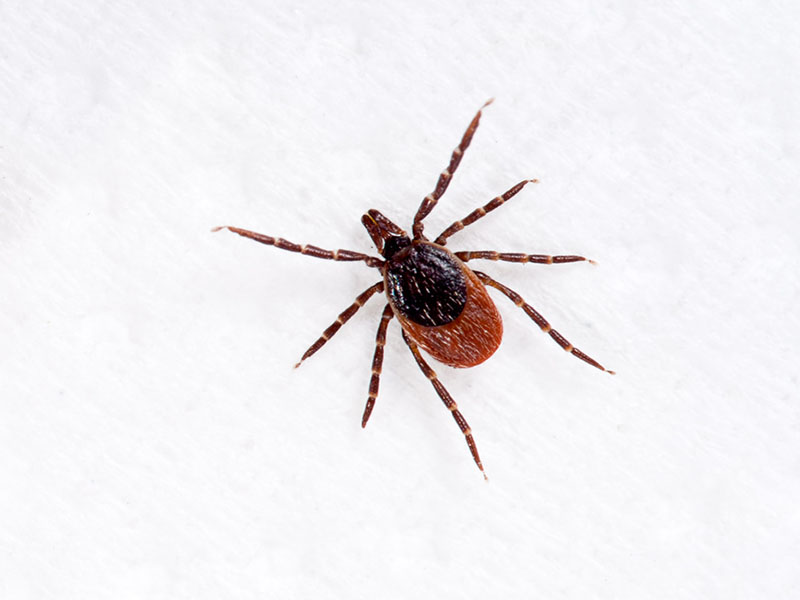
Source: HealthDay
Related MedlinePlus Pages: Antibiotics, Lyme Disease via MedlinePlus Health News Read More Here..
Report Suggests Zika's Effect on Fetus May Be Even Deadlier Than Thought
Source: HealthDay
Related MedlinePlus Pages: Brain Malformations, Fetal Health and Development, Zika Virus via MedlinePlus Health News Read More Here..
Gene Abnormality May Be Key to Down Syndrome, Scientists Say
Results might eventually lead to new treatments, study authors suggest
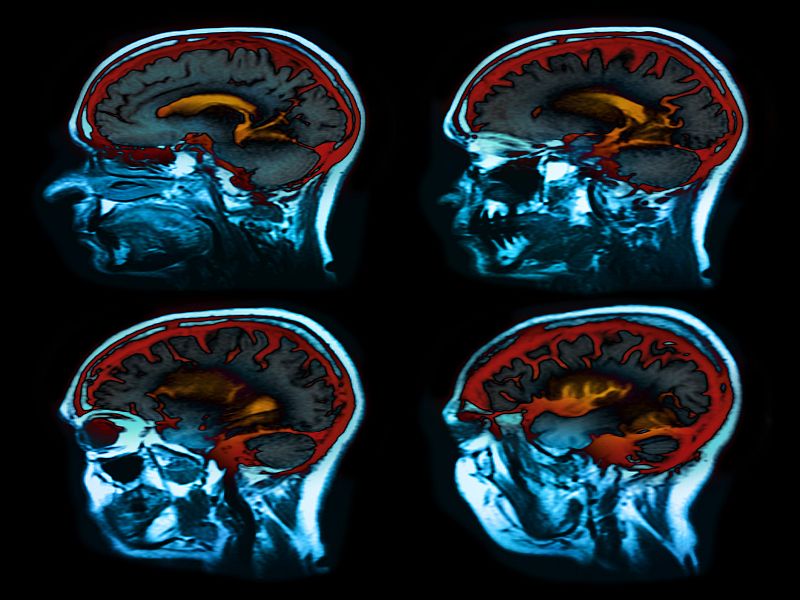
Source: HealthDay
Related MedlinePlus Pages: Down Syndrome, Genes and Gene Therapy via MedlinePlus Health News Read More Here..
In Mice, Scientists Turn Stem Cells into Sperm
Source: HealthDay
Related MedlinePlus Pages: Male Infertility, Stem Cells via MedlinePlus Health News Read More Here..
New Cooling Technique Might Aid Brain Surgery
Combined with verbal checks, it allowed surgeons to protect areas where speech occurs
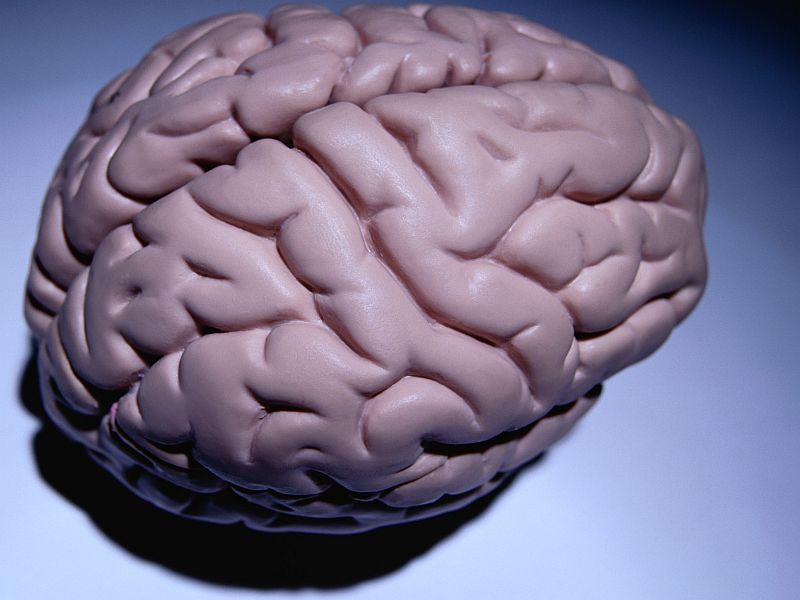
Source: HealthDay
Related MedlinePlus Pages: Brain Diseases, Surgery via MedlinePlus Health News Read More Here..
Sleeping Pills May Spell Trouble for Older Drivers
Study found risk of crashes more than doubled for those over 80 who used Ambien

Source: HealthDay
Related MedlinePlus Pages: Impaired Driving, Insomnia, Seniors' Health via MedlinePlus Health News Read More Here..
'Preemie' Babies May Face Long-Term Anesthesia Risks
Source: HealthDay
Related MedlinePlus Pages: Anesthesia, Premature Babies via MedlinePlus Health News Read More Here..
Study Details Dire Consequences of Fetal Alcohol Disorders
Source: HealthDay
Related MedlinePlus Page: Fetal Alcohol Spectrum Disorders via MedlinePlus Health News Read More Here..
Merely the absence of infirmity
| Health is not just the absence of disease. While low morale is making the medical profession sick, Chris Preece offers some help Related items from OnMedica GPs, consultants and public back striking juniors Make GP a more attractive career, agree MPs Treatment of whistleblowers a “stain on NHS”, say MPs GP surgery closures displace 200,000 patients Public wants NHS to prioritise 7-day GP access |
UFC returns to London this weekend

It's been almost two years since the UFC has brought one of its big-production fight nights over to London, but tomorrow night, they'll be more than making up for their absence at what is set to be one of the best cards the UK has ever seen, in large part thanks to the high-profile headline bout between Anderson Silva and Michael Bisping.
UFC Fight Night: Silva vs. Bisping will take place at The O2 Arena, with preliminary bouts starting at 5:45pm and the main card kicking off at 9pm. For those who have been following mixed martial arts for some time, the main event between Brazil's Silva and the UK's own Bisping is a pretty big deal. But for anyone new to the sport, this exciting fight card won't be lost on you, either – here's what you need to know about the two fighters at the top of the bill.
Anderson 'The Spider' Silva
Anderson Silva is a household name in MMA. His super slick striking not only lent itself to his impressive 17-fight winning streak which left him unbeaten for around five and a half years, but it also earned him the reputation as one of the best pound-for-pound fighters active today. The Brazilian fighter – who ruled the middleweight rankings from October 2006 until July 2013 – made a habit of dominating his opponents, usually ending the one-sided fights by knockout. His elusiveness, brutal attacking style and accuracy were special to watch, often leaving even veteran analysts, pundits and commentators in awe. Although he lost his middleweight title to Chris Weidman in a shocking knockout loss almost three years ago, Silva is still a huge draw for fans. The combination of his confidence and unorthodox fighting style has never been short of entertaining, and Saturday night will undoubtedly be no different.
Michael 'The Count' Bisping
The only way to make an Anderson Silva bout even more appealing in the UK? Bill him against one of the country's most popular fighters. Michael Bisping might be taking on one of the greatest MMA fighters the UFC has ever seen, but one thing's for sure: he'll have the home crowd on his side. The Lancashire native has been fighting in the UFC for 10 years, having made his debut on season three of /The Ultimate Fighter/, a reality TV series in which mixed martial artists compete for a contract within the prestigious organisation. Although Bisping can claim wins over big names like Cung Le, Alan Belcher and Brian Stann, Saturday night is said to be his toughest test yet, a meeting in which both fighters will undergo a test of attrition in a scheduled five-round battle. Praised for his fitness, Bisping is also well-known for his skills in the stand-up department, so we can expect to see the two go toe-to-toe to determine the winner.
Saturday night's fight card will also boast an exciting match-up between Gegard Mousasi and Thales Leites, as well as fights from the UK's top fighters, including fan-favourite Brad Pickett.
UFC Fight Night: Silva vs. Bisping will be live and exclusive on UFC Fight Pass, with the first prelim bout scheduled for 5:45pm.
via Featured Articles http://www.womensfitness.co.uk/news/1516/ufc-returns-to-london-this-weekend
Health and Fitness Blog
UFC returns to London this weekend

It's been almost two years since the UFC has brought one of its big-production fight nights over to London, but tomorrow night, they'll be more than making up for their absence at what is set to be one of the best cards the UK has ever seen, in large part thanks to the high-profile headline bout between Anderson Silva and Michael Bisping.
UFC Fight Night: Silva vs. Bisping will take place at The O2 Arena, with preliminary bouts starting at 5:45pm and the main card kicking off at 9pm. For those who have been following mixed martial arts for some time, the main event between Brazil's Silva and the UK's own Bisping is a pretty big deal. But for anyone new to the sport, this exciting fight card won't be lost on you, either – here's what you need to know about the two fighters at the top of the bill.
Anderson 'The Spider' Silva
Anderson Silva is a household name in MMA. His super slick striking not only lent itself to his impressive 17-fight winning streak which left him unbeaten for around five and a half years, but it also earned him the reputation as one of the best pound-for-pound fighters active today. The Brazilian fighter – who ruled the middleweight rankings from October 2006 until July 2013 – made a habit of dominating his opponents, usually ending the one-sided fights by knockout. His elusiveness, brutal attacking style and accuracy were special to watch, often leaving even veteran analysts, pundits and commentators in awe. Although he lost his middleweight title to Chris Weidman in a shocking knockout loss almost three years ago, Silva is still a huge draw for fans. The combination of his confidence and unorthodox fighting style has never been short of entertaining, and Saturday night will undoubtedly be no different.
Michael 'The Count' Bisping
The only way to make an Anderson Silva bout even more appealing in the UK? Bill him against one of the country's most popular fighters. Michael Bisping might be taking on one of the greatest MMA fighters the UFC has ever seen, but one thing's for sure: he'll have the home crowd on his side. The Lancashire native has been fighting in the UFC for 10 years, having made his debut on season three of /The Ultimate Fighter/, a reality TV series in which mixed martial artists compete for a contract within the prestigious organisation. Although Bisping can claim wins over big names like Cung Le, Alan Belcher and Brian Stann, Saturday night is said to be his toughest test yet, a meeting in which both fighters will undergo a test of attrition in a scheduled five-round battle. Praised for his fitness, Bisping is also well-known for his skills in the stand-up department, so we can expect to see the two go toe-to-toe to determine the winner.
Saturday night's fight card will also boast an exciting match-up between Gegard Mousasi and Thales Leites, as well as fights from the UK's top fighters, including fan-favourite Brad Pickett.
UFC Fight Night: Silva vs. Bisping will be live and exclusive on UFC Fight Pass, with the first prelim bout scheduled for 5:45pm.
